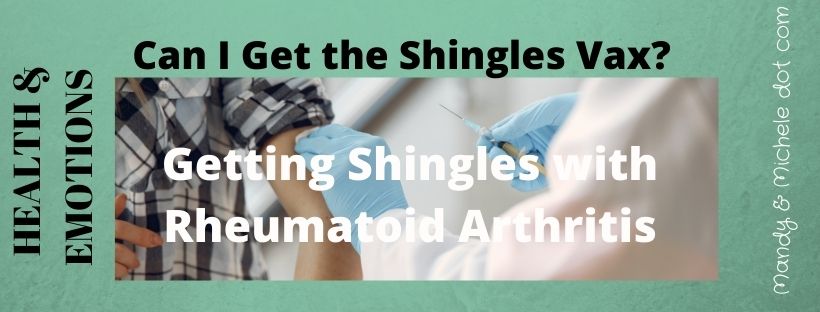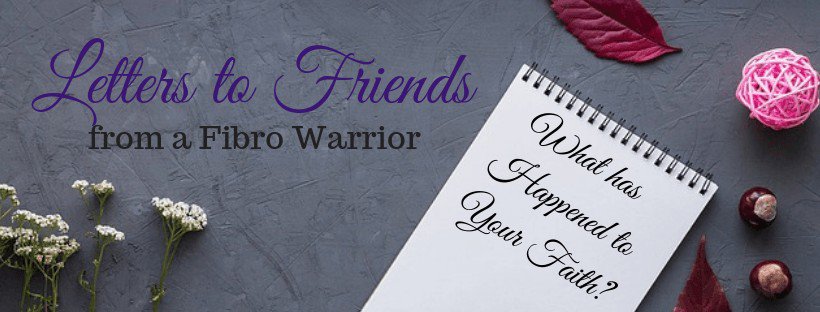It started with tenderness around my elbow. I was a bit concerned because allergic reactions tend to start at the elbow for me. But I couldn’t figure out what was different in my life. About a week later, little blisters broke out, and then, oh the itching and pain! Y’all, you do not want to experience this. Did I somehow contact poison oak when they were removing trees from our backyard?
Finally, I gave in and contacted my doctor.
Reminder : I am a patient, not a doctor. What I am sharing comes largely from what my doctors taught me and some of what is discovered in my own research.
The purpose of this series is to inform. I pray you will be informed enough to support friends with this syndrome or possibly acquire informed questions for your doctor. Please talk with your doctor or visit the Mayo Clinic website for official information, diagnosis, and treatment.
Shingles! Are you serious? Shingles?
She gave me some anti-viral medication. But still… It itched and burned for a good week. I felt tired and not well. (What they call malaise). She advised that it IS contagious to children who aren’t vaccinated or haven’t had chickenpox. And to pregnant women. Oh and guess what…. my husband never had chickenpox!
I remember elderly ladies having shingles when I was a child. And I remember people saying how unbearable it was. I remember my brother, sister, and I all having chickenpox together. And I remember the soreness and itching. But for some reason, I never considered getting the shingles vaccine.
No one ever told me that if you have Rheumatoid Arthritis, you are TWICE as likely to get Shingles.
So Let’s Talk Shingles & the Vaccine

What is it? Mayo Clinic describes it like this: “Shingles is a viral infection that causes a painful rash. Although shingles can occur anywhere on your body, it most often appears as a single stripe of blisters that wraps around either the left or the right side of your torso. [Thankfully, mine appeared on my elbow and down my arm to my wrist. Much more bearable.]
It is typically only on one side of your body. It isn’t life-threatening, but you might wish you were dead. 🙂 It’s very painful and can last up to 6 or 8 weeks. Early treatment can help lessen the pain or shorten the duration. “The most common complication is postherpetic neuralgia, which causes shingles pain for a long time after your blisters have cleared.” [I have a small area of this, however, I also have fibromyalgia and the pain is about the same.]
1 in 3 people in the United States will develop shingles in their lifetime. This number doubles for those of us with RA.
For all these reasons, vaccination is strongly recommended, especially if you are auto-immune. *Read on because there are things to consider.
Symptoms
According to Mayo Clinic, the most common symptoms include:
- Pain, burning, numbness or tingling
- Sensitivity to touch
- A red rash that begins a few days after the pain
- Fluid-filled blisters that break open and crust over
- Itching
Less Common are these symptoms:
- Fever
- Headache
- Sensitivity to light
- Fatigue (especially for those of us with fibro and/or RA)
Other complications that may arise are:
- Postherpetic neuralgia. For some people, shingles pain continues long after the blisters have cleared. This condition is known as postherpetic neuralgia, and it occurs when damaged nerve fibers send confused and exaggerated messages of pain from your skin to your brain.
- Vision loss. Shingles in or around an eye (ophthalmic shingles) can cause painful eye infections that may result in vision loss.
- Neurological problems. Depending on which nerves are affected, shingles can cause an inflammation of the brain (encephalitis), facial paralysis, or hearing or balance problems.
- Skin infections. If shingles blisters aren’t properly treated, bacterial skin infections may develop.
Reminder: I just want to say that I am a patient, not a doctor. What I am sharing comes largely from what my doctors taught me and what I have discovered in my own searching.
I am sharing to hopefully help you be informed enough to support friends with this syndrome or possibly acquire informed questions for your doctor. Please talk with your doctor or visit the Mayo Clinic website for official information, diagnosis, and treatment.
How is Shingles Related to Chicken Pox?
According to the CDC, Chickenpox and shingles are related because they are caused by the same virus (varicella-zoster virus). After a person recovers from chickenpox, the virus stays dormant (inactive) in the body. It can reactivate years later and cause shingles.
- You can get Shingrix whether or not you remember having had chickenpox in the past.
- More than 99% of Americans born on or before 1980 have had chickenpox, even if they don’t remember having the disease.
The Vaccine.
*It is important for patients with RA (Rheumatoid Arthritis) who use immunosuppressant medications, such as one of the biologics or methotrexate should avoid live virus vaccines because our bodies are not able to fight off exposure to these viral infections. Make certain that you keep a record of all your vaccines and keep them up-to-date.
There are two types of vaccines. Per this webpage: Shingles Vaccine Safe for Rheumatoid Arthritis?
- Zostavax (no longer available in the U.S.) Approved by the FDA in 2006 for us in audlts aged 60 and over. In 2011, the FDA expanded the the use to adults 50 and older. Zostavax contains live virus and is not appropriate for people using immunosuppressant medication.
- Shingrix – Approved in 2017 for people 50 and older. It does not contain a live virus. There are two doses set 2 to 6 months apart. Since this is a Non-live vaccine, I am now able to receive the vaccination, which I plan to do soon. I need to wait until my rash is completely gone. IF you are receiving infusions, check with your doctor about timing. The most common side effects of a shingles vaccine are redness, pain, tenderness, swelling and itching at the injection site, and headaches.
The CDC says that anyone 19 and over with a weakened immune system because of disease should get both doses. Immunity remains strong for 7 years. Shingrix is 68%-91% effective in preventing shingles, depending on the condition that affects the immune system. Even if you have the vaccine Zostavax, you should get the Shingrix vaccine.
Who Should NOT Get the Vaccine?
If you are:
- currently breastfeeding, pregnant or trying to become pregnant
- currently have shingles
- have a moderate or sever illness, with or without a fever, wait until your recover.
- if you are allergic to any component of the vaccine (neomycin), or reacted to a previous dose.
- have had a stem cell transplant
Allergic Reactions
Severe allergic reactions to Shingrix are rare. Signs of an allergic reaction happen within minutes or hours after vaccination and include hives, swelling of the face and throat, difficulty breathing, a fast heartbeat, dizziness, or weakness. If you experience these or any other life-threatening symptoms, see a doctor right away.
Resources
Shingles – Symptoms and causes – Mayo Clinic
Shingles Vaccine Safe for Rheumatoid Arthritis?
Shingrix Shingles Vaccination: What Everyone Should Know | CDC
https://www.healthline.com/health/internal-shingles

Pastor’s Wife (retired) & Chronic Pain Warrior blogs about how to make it through anything by relating her own life experiences to her writing. She is passionate about her love for the Lord and desires to spread that passion to others. She has a great desire to encourage women who are following behind her.




